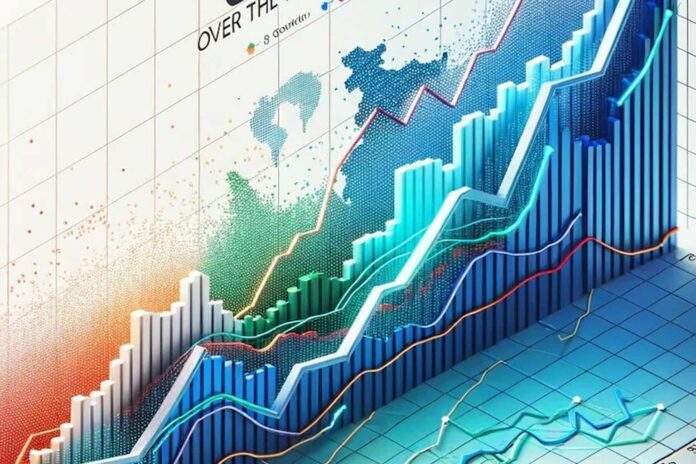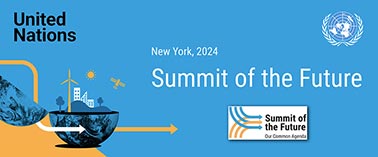New Delhi: India’s economy is set to grow by 6.6% in 2025, according to the World Economic Situation and Prospects (WESP) 2025 report released by the United Nations. This places India firmly as the fastest-growing large economy globally, outperforming advanced economies and emerging markets alike, even as global growth remains subdued at an estimated 2.8%.
The growth is attributed to robust performance in key sectors like electronics and pharmaceuticals, along with a 4% expansion in agriculture. However, the 2025 forecast reflects a stabilisation following the post-pandemic surge of 8.2% in 2023, driven by pent-up demand. The report notes that India’s economy is finding its trend line and balancing growth at a steady rate.
Sectoral Drivers of Growth
The electronics sector, including the rapidly expanding smartphone manufacturing industry, is expected to continue contributing significantly to India’s GDP. Similarly, pharmaceuticals remain a key growth driver, bolstered by global demand for vaccines and generic drugs.
The agriculture sector, which recorded a robust 4% growth in 2024, also plays a vital role, ensuring resilience amid global supply chain disruptions. Investments in farm technology, irrigation, and rural infrastructure are cited as factors enabling this growth.
Domestic Expectations
While India is performing well by global standards, the report’s projections of a 6.6% growth rate is “modest” for Indians, who are accustomed to higher growth rates when compared to the pre-pandemic highs.
“The economy is balancing at a good 6.6%, but public sentiment favors higher growth rates,” Dr. Nagesh Kumar, Fmr. Director of UNESCAP, the United Nations Economics and Social Commission of Asia and the Pacific said while launching WESP 2025 at UN House today. This underscores the challenge for Indian policymakers to sustain momentum while addressing rising public aspirations.
Key Risks: Oil prices and Geopolitical tensions
With the world in geopolitical flux, rapid rise in oil prices are a significant risk to India’s economic outlook, Dr. Nagesh noted. As a major importer, any sudden spike in global oil prices—driven by geopolitical tensions like the war in Ukraine—could adversely impact the economy.
In addition, looming trade wars and economic tariff policies, launched by the incoming U.S. President Donald Trump, add uncertainty to global economic conditions. Such disruptions could distort global trade flows, affecting India’s export-driven industries.
Government Capex: The Primary Growth Engine
The Indian government’s capital expenditure (capex) of ₹10 trillion remains the primary engine of growth, particularly as private sector investment continues to lag. Infrastructure projects, including roads, railways, and renewable energy, are expected to generate employment and boost domestic demand.
“Government capex is a critical driver for maintaining growth momentum,” the report states, noting its role in crowding in private investment. However, the hesitancy of private sector players to invest at scale poses challenges for sustaining long-term growth.
Women’s Workforce Participation: A bright spot
In contrast to global trends of declining women’s labor force participation, India has witnessed an increase. This improvement is seen as a positive development for gender inclusion and economic productivity. The report emphasises that greater participation of women in the workforce could lead to sustained gains for the economy, contributing to household incomes and addressing skill shortages in key industries.
Regional Trade and Untapped Potential
The report highlights the inefficiencies in South Asia’s regional trade, much of which routes through Dubai despite geographic proximity. Trade between India and Pakistan, for instance, often bypasses direct channels, reflecting missed opportunities for economic integration within the region.
“South Asia’s economies are not harnessing their geographic advantages for trade,” Dr. Nagesh said, hoping that improved regional cooperation will unlock economic benefits.
Critical Minerals: A strategic focus
The WESP 2025 report devotes significant attention to critical minerals, essential for the global clean energy transition. India, with its growing demand for lithium, cobalt, and rare earth metals, must prioritize policies for sustainable mining and equitable resource management.
The report warns that securing these minerals will be vital for India’s ambitions in electric vehicles (EVs) and renewable energy. Any disruption in global supply chains for these resources could pose a challenge to India’s green energy targets.
Economic forecasts for India in context
India’s projected 6.6% growth rate compares favorably to other large economies. The U.S. and Eurozone are expected to grow at a slower pace, with inflationary pressures and subdued demand weighing on their recoveries. China’s growth, too, has slowed due to structural challenges in its real estate and financial sectors.
In South Asia, India remains the economic powerhouse, accounting for the majority of regional GDP. However, the report notes that regional disparities persist, with smaller economies like Sri Lanka and Pakistan grappling with debt crises and political instability.
Global growth outlook and implications for India
The global economy is expected to grow by just 2.8% in 2025, hindered by high inflation, geopolitical uncertainties, and the slow recovery of key industries. India’s outperformance provides a contrast to this subdued global scenario.
The report highlights that easing inflationary pressures and improving supply chain dynamics could provide a tailwind for global growth in the second half of 2025. For India, sustained export demand and domestic consumption are seen as key to maintaining its growth trajectory.
The WESP 2025 report paints a picture of cautious optimism for India, balancing strong domestic fundamentals with external risks. The country’s growth, underpinned by government spending, resilient sectors like electronics and agriculture, and rising women’s workforce participation, places it in a favorable position.
However, challenges such as volatile oil prices, regional trade inefficiencies, and global geopolitical tensions could test India’s economic resilience in the coming years. Policymakers will need to navigate these uncertainties while leveraging opportunities in critical minerals and regional cooperation to ensure sustained progress.










